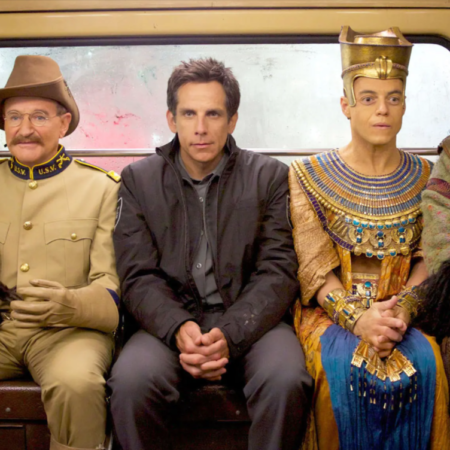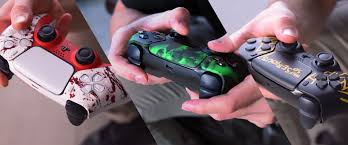Introduction to USB-C
USB-C is a new type of connector that is quickly becoming the standard for charging devices. It is a smaller and more versatile connector than older types of connectors, such as USB-A and micro-USB.
USB-C is a reversible connector, which means that it can be plugged in either way. This makes it much easier to connect devices, especially in low-light conditions.
USB-C can also deliver more power than older types of connectors. This means that it can be used to charge devices faster, and it can also be used to power devices that require a lot of power, such as laptops.
USB-C is also capable of transferring data at much faster speeds than older types of connectors. This makes it ideal for connecting devices that require a lot of data transfer, such as external hard drives and video cameras.
In addition to its technical advantages, USB-C is also more durable than older types of connectors. This makes it less likely to break, which is a major concern for people who frequently connect and disconnect devices.
Overall, USB-C is a significant improvement over older types of connectors. It is smaller, more versatile, more powerful, and more durable. As a result, it is quickly becoming the standard for charging devices.
Benefits of USB-C
Here are some of the benefits of USB-C:
* **It is a reversible connector.** This means that you can plug it in either way up, which is much more convenient than older types of connectors that had to be plugged in a specific direction.
* **It is faster than older types of connectors.** USB-C can transfer data at speeds of up to 10Gbps, which is twice as fast as USB 3.1 Gen 2 and 10 times faster than USB 2.0.
* **It can be used to charge devices.** USB-C can provide up to 100W of power, which is enough to charge most laptops and tablets.
* **It is more durable than older types of connectors.** USB-C is made of a stronger material that is less likely to break.
* **It is more versatile than older types of connectors.** USB-C can be used for a variety of purposes, including charging, data transfer, and video output.
Differences between USB-C and other types of connectors
USB-C is a newer type of connector than USB-A and micro-USB. It has a number of advantages over these older connectors, including:
* **Smaller size:** USB-C is smaller than USB-A and micro-USB, making it more convenient to use with smaller devices.
* **Reversible:** USB-C can be plugged in either way, which eliminates the need to fumble with the connector.
* **Higher power delivery:** USB-C can deliver up to 100 watts of power, which is more than enough to power most devices.
* **More versatile:** USB-C can be used for a wider variety of purposes than USB-A and micro-USB, including data transfer, charging, and video output.
Here is a table comparing the key differences between USB-C and other types of connectors:
| Characteristic | USB-C | USB-A | Micro-USB |
|—|—|—|—|
| Size | Smaller | Larger | Larger |
| Reversibility | Yes | No | No |
| Power delivery | Up to 100 watts | Up to 5 watts | Up to 2.5 watts |
| Versatility | More versatile | Less versatile | Less versatile |
Overall, USB-C is a superior connector to USB-A and micro-USB. It is smaller, reversible, more powerful, and more versatile. As a result, it is quickly becoming the standard for charging devices.“`
4. How to use USB-C
To use USB-C, simply plug the connector into the port on your device. The connector can be inserted in either direction, so there is no need to worry about which way is up.
Once the connector is plugged in, you can start using your device as you normally would. If you are charging your device, the battery indicator will show that it is charging.
If you are using a USB-C cable to connect two devices together, the devices will automatically be recognized and you will be able to transfer data between them.
Here are some additional tips for using USB-C:
- Make sure that the connector is properly inserted into the port. If the connector is not inserted all the way, it may not be able to make a connection.
- Do not force the connector into the port. If the connector is not fitting properly, it may be damaged.
- Be careful not to bend the connector too much. If the connector is bent, it may be damaged.
“`
5. Choosing the right USB-C cable
When choosing a USB-C cable, there are a few things to keep in mind:
- The length of the cable.
- The maximum power delivery (PD) rating.
- The type of connector on each end of the cable.
The length of the cable is important to consider if you need to be able to reach your device from a distance. The maximum power delivery (PD) rating is important if you want to be able to charge your device quickly. The type of connector on each end of the cable is important to make sure that it is compatible with your device.
Here are some tips for choosing the right USB-C cable:
- If you need a long cable, choose one that is at least 3 feet long.
- If you want to be able to charge your device quickly, choose a cable with a PD rating of 60 watts or higher.
- If you have a device with a USB-C port on one end and a different type of port on the other end, choose a cable that has the appropriate connector on each end.
For more information on choosing the right USB-C cable, you can visit the following resources:
Introduction to USB-C
USB-C is a new type of connector that is quickly becoming the standard for charging devices. It is a smaller and more versatile connector than older types of connectors, such as USB-A and micro-USB.
Benefits of USB-C
- Smaller and more versatile than older connectors
- Can carry more power and data
- Reversible design
- Supported by a wide range of devices
Differences between USB-C and other types of connectors
| Connector | Size | Power | Data | Reversible |
|---|---|---|---|---|
| USB-C | 8.4mm x 2.6mm | Up to 100W | Up to 40Gbps | Yes |
| USB-A | 12.7mm x 4.45mm | Up to 5V/2.4A | Up to 480Mbps | No |
| Micro-USB | 6.35mm x 1.2mm | Up to 5V/2.4A | Up to 480Mbps | No |
How to use USB-C
To use USB-C, simply plug the connector into the port on your device. The connector is reversible, so it can be plugged in either way.
Choosing the right USB-C cable
- Make sure the cable is compatible with your device.
- Choose a cable that is long enough for your needs.
- Choose a cable that is made from high-quality materials.
Where to buy USB-C cables
- Amazon
- Best Buy
- Walmart
- Target
- Other online retailers
Common problems with USB-C
- The cable is not recognized by your device.
- The cable is not charging your device properly.
- The cable is damaged.
How to troubleshoot USB-C problems
- Make sure the cable is plugged in properly.
- Try a different cable.
- Try a different port on your device.
- Update the drivers for your device.
- Reset your device.
FAQs about USB-C
- What is the difference between USB-C and Thunderbolt 3?
- Can I use a USB-C cable to connect my phone to my computer?
- Can I use a USB-C cable to charge my laptop?
Conclusion
USB-C is a powerful and versatile connector that is quickly becoming the standard for charging devices. It is smaller, more versatile, and more powerful than older connectors, such as USB-A and micro-USB. If you are looking for a new cable to connect your devices, consider investing in a USB-C cable.
Resources
- USB.org
-
Common problems with USB-C
While USB-C is a relatively new connector, it has already been plagued by a number of problems. Some of the most common problems include:
- **Incompatibility:** Some USB-C devices are not compatible with other USB-C devices. This can be caused by a number of factors, such as different power requirements or different data transfer speeds.
- **Faulty cables:** Some USB-C cables are faulty and can cause problems with data transfer or charging. This is often caused by poor quality construction or damaged cables.
- **Loose connections:** USB-C connectors can be loose, which can lead to problems with data transfer or charging. This is often caused by wear and tear or by using the wrong type of cable.
If you are experiencing problems with your USB-C devices, there are a few things you can do to troubleshoot the issue. First, try using a different USB-C cable. If the problem persists, try using a different USB-C port on your device. If the problem still persists, you may need to contact the manufacturer of your device for support.
Here are some tips to help you avoid problems with USB-C:
- Only use high-quality USB-C cables.
- Be careful not to bend or damage USB-C connectors.
- Make sure that your devices are compatible with each other.
By following these tips, you can help to reduce the risk of problems with USB-C.
How to troubleshoot USB-C problems
If you are having problems with your USB-C device, there are a few things you can try to troubleshoot the issue.
First, check to make sure that your device is properly connected to the USB-C cable. The connector should be securely inserted into both the device and the port. If the connector is not fully inserted, it may not be making a good connection.
If the device is still not connecting, try a different USB-C cable. Some cables are of poor quality and may not be able to provide enough power to the device.
If you are still having problems, try restarting your device. This may clear any temporary glitches that are preventing the device from connecting properly.
If none of these solutions work, you may need to contact the manufacturer of your device for further assistance.
FAQs about USB-C
Here are some frequently asked questions about USB-C:
- What is USB-C?
- What are the benefits of USB-C?
- What are the differences between USB-C and other types of connectors?
- How do I use USB-C?
- How do I choose the right USB-C cable?
- Where can I buy USB-C cables?
- What are the common problems with USB-C?
- How do I troubleshoot USB-C problems?
Conclusion
USB-C is a powerful new connector that is quickly becoming the standard for charging devices. It is smaller, more versatile, and more powerful than older types of connectors, such as USB-A and micro-USB. If you are looking for a new way to connect your devices, USB-C is a great option.
11. Resources
Here are some resources that you may find helpful:








